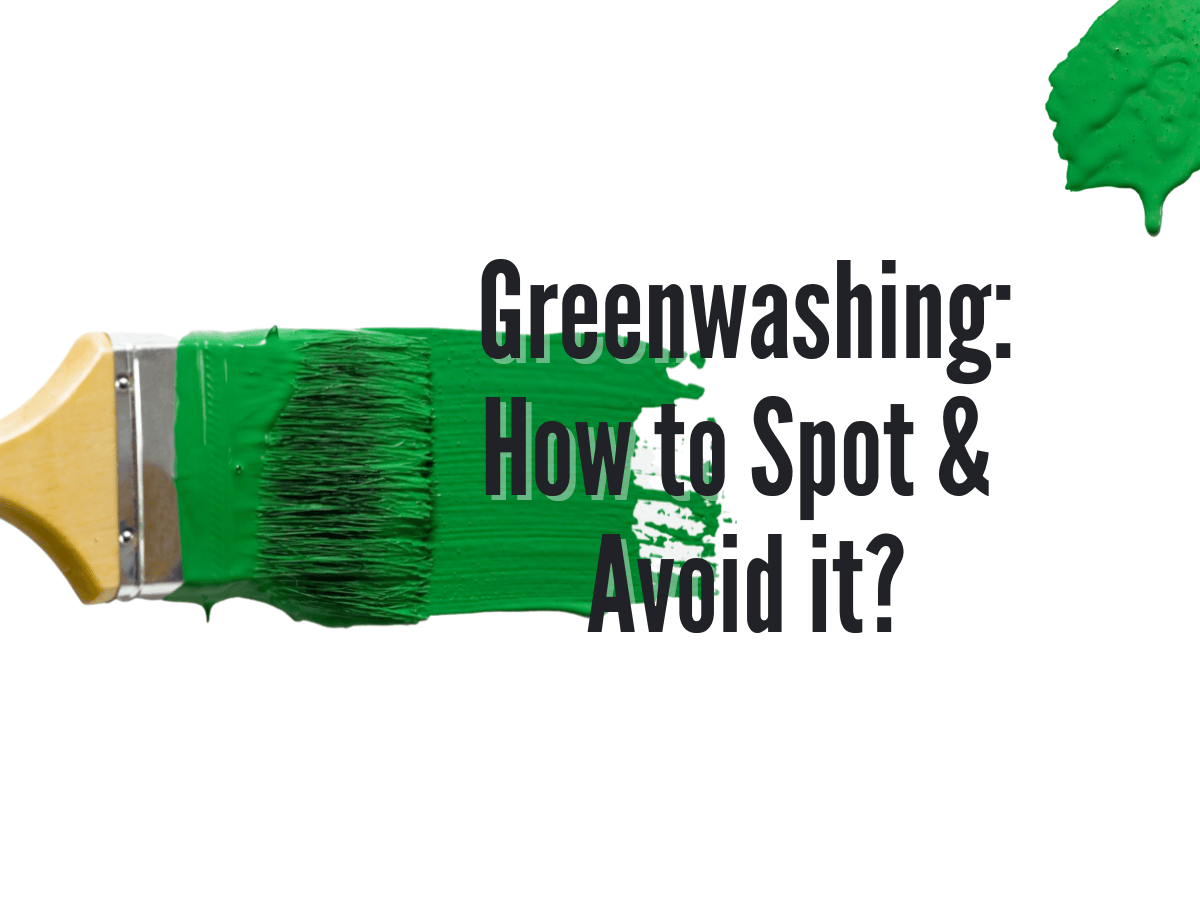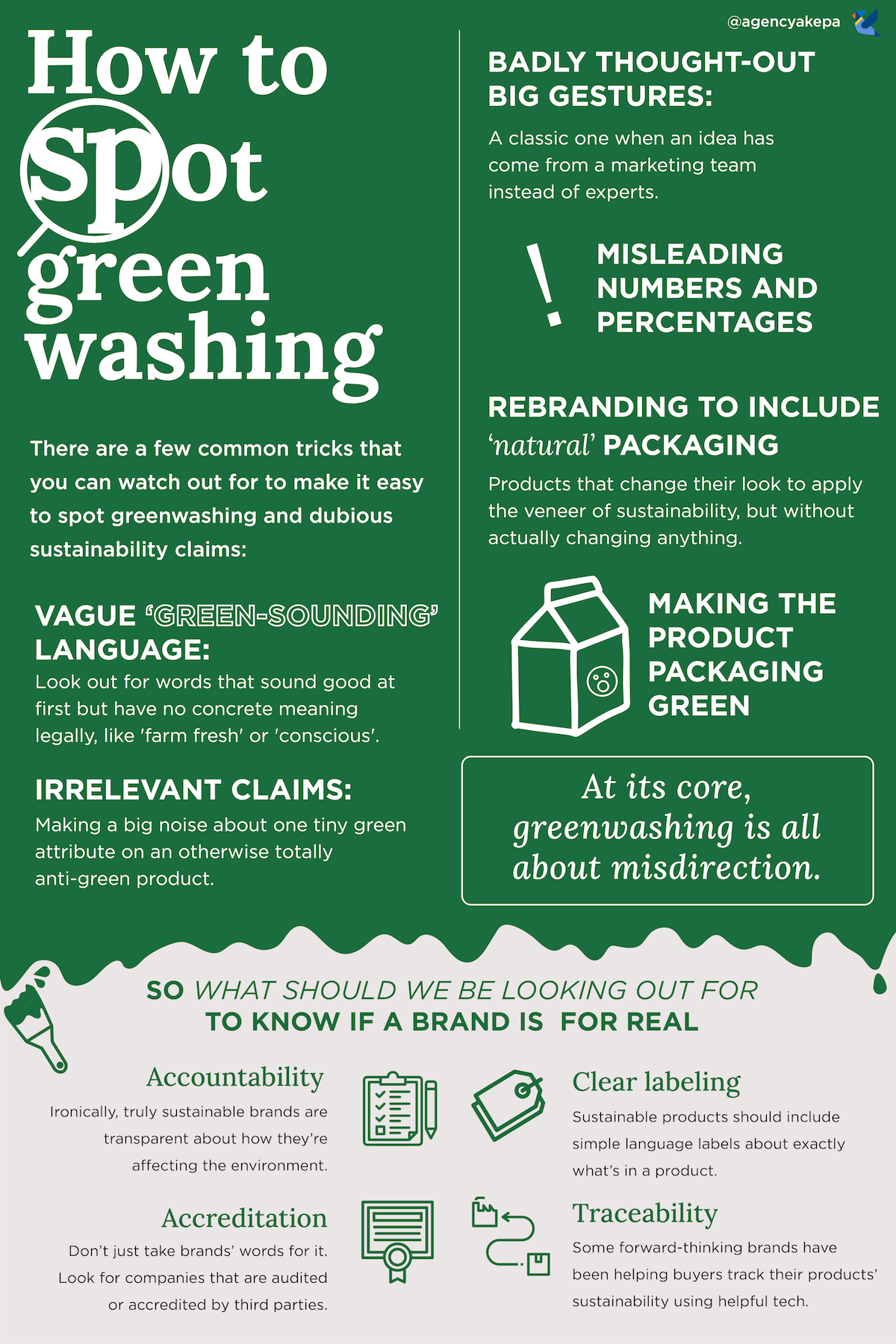
Greenwashing: How to Spot and Avoid Deceptive Eco-Claims
In an increasingly eco-conscious world, more and more people are striving to make environmentally friendly choices. We want to support businesses that genuinely care about the planet, reduce our carbon footprint, and contribute to a healthier future. But as consumer demand for "green" products grows, so does a sneaky marketing trick known as greenwashing.
Greenwashing is a term that refers to the practice of making a product, service, or company appear more environmentally friendly than it actually is. It’s like putting a fresh coat of green paint on something that’s still quite dirty underneath. Companies use clever marketing, vague claims, and misleading imagery to trick consumers into thinking they’re making a sustainable choice, when in reality, they might not be.
This long, SEO-friendly guide will help you become a "green detective," empowering you to spot greenwashing tactics and make truly informed, eco-conscious decisions.
What Exactly Is Greenwashing? A Simple Definition
Imagine a company selling plastic water bottles. Instead of addressing the core issue of plastic waste, they might put a picture of a lush forest on the label, print "Earth-Friendly!" in big letters, and boast about a tiny percentage of recycled content, while ignoring the huge environmental impact of producing and distributing millions of new plastic bottles. That’s greenwashing in action.
In essence, greenwashing is: misleading consumers about the environmental practices of a company or the environmental benefits of a product or service.
It plays on our desire to do good, making us believe we’re supporting sustainability when we might be contributing to the problem.
Why Is Greenwashing a Problem?
Greenwashing isn’t just annoying; it has real, negative consequences:
- Erodes Trust: It makes consumers skeptical of all environmental claims, even legitimate ones, making it harder for truly sustainable businesses to thrive.
- Confuses Consumers: It makes it difficult to differentiate between genuinely eco-friendly products and those that are just cleverly marketed.
- Harms Genuine Eco-Businesses: Companies that invest heavily in sustainable practices are undercut by competitors who simply claim to be green without doing the work.
- Slows Real Progress: By diverting attention and resources to superficial "green" initiatives, greenwashing hinders the systemic changes needed to address pressing environmental issues.
- Perpetuates Harm: If consumers unknowingly buy products that are still environmentally damaging, the negative impacts continue.
Common Greenwashing Tactics: How Companies Try to Fool You
Companies employ various strategies to greenwash their products and image. Understanding these tactics is the first step to spotting them.
-
1. The "Green" By Definition Claim:
- What it is: Boasting about a product feature that is already legally required or universally true.
- Example: A product labeled "CFC-Free!" when CFCs (ozone-depleting chemicals) have been banned for decades. Or "Water is chemical-free!" (Well, yes, it’s just water).
- Red Flag: If a claim seems incredibly obvious or like something every product in that category should already be, it might be greenwashing.
-
2. Vague Language and Buzzwords:
- What it is: Using fuzzy, undefined terms that sound good but mean very little.
- Examples: "Eco-friendly," "all-natural," "green," "sustainable," "earth-friendly," "non-toxic" (without specifying what it’s non-toxic to or compared to what), "environmentally sound."
- Red Flag: If a claim lacks specific details, numbers, or verifiable facts, be suspicious. What does "eco-friendly" actually mean for this product?
-
3. Misleading Imagery and Packaging:
- What it is: Using visuals like green leaves, trees, the earth, blue skies, or rustic textures to create an eco-friendly impression, even if the product itself isn’t.
- Examples: A brightly colored plastic bottle covered in images of lush forests or a product with "natural" looking brown packaging that’s still non-recyclable.
- Red Flag: Don’t let pretty pictures or earthy tones distract you from the actual product ingredients or company practices. Is the packaging genuinely sustainable, or just designed to look that way?
-
4. Irrelevant Claims / The Lesser of Two Evils:
- What it is: Highlighting a small, often insignificant, eco-benefit while ignoring a much larger environmental footprint.
- Examples: A disposable plastic product boasting "made with 10% recycled content" when the other 90% is virgin plastic and the product is still destined for a landfill. Or a car manufacturer promoting "fuel-efficient models" while also heavily producing gas-guzzling SUVs.
- Red Flag: Does the claimed benefit address the biggest environmental impact of the product or company? Is it a distraction from a larger problem?
-
5. Hidden Trade-Offs:
- What it is: Focusing on one positive environmental attribute while ignoring other, often more significant, negative impacts.
- Examples: An "energy-efficient" electronic device that contains hazardous materials that are difficult to recycle. Or "organic cotton" clothing that was produced in a factory with terrible labor practices and shipped across the globe using significant carbon emissions.
- Red Flag: Look at the product’s entire lifecycle – from raw materials to disposal. Is the company transparent about all aspects of its production?
-
6. No Proof / Lack of Certification:
- What it is: Making grand environmental claims without providing any verifiable evidence, data, or reputable third-party certifications.
- Examples: A product claiming "responsibly sourced" without detailing how, or "carbon neutral" without showing the offset projects or calculations.
- Red Flag: Always look for specific data, scientific studies, or independent certifications (more on these below!). If they say "trust us," don’t.
-
7. Self-Generated Labels or "Fake" Certifications:
- What it is: Companies creating their own "eco-labels" or "seals of approval" that look official but have no independent backing or meaning.
- Examples: A product with a custom-designed "Eco-Approved" stamp that was created by the company itself, rather than a recognized third-party organization.
- Red Flag: Research any eco-label you see. Is it from a reputable, independent organization, or does it look like something a company just made up?
How to Spot Greenwashing: Your Green Detective Checklist
Now that you know the tactics, here are actionable steps to become a savvy green consumer:
-
1. Ask "Why?" and "How?":
- When you see an environmental claim, ask: "Why is this important?" and "How is this achieved?" If the answer is vague or non-existent, be wary.
- Example: "Our product is eco-friendly!" Why? How? (If they can’t answer, move on).
-
2. Look for Specifics, Not Just Buzzwords:
- Demand details. Instead of "sustainable," look for "made with 100% post-consumer recycled plastic," "uses 50% less water in production," or "certified organic by [specific certification body]."
- Numbers, percentages, and verifiable facts are good signs.
-
3. Check for Reputable Certifications and Eco-Labels:
- Legitimate third-party certifications are your best friend. These organizations independently verify a company’s claims against strict environmental standards.
- Examples of reputable certifications:
- USDA Organic (for food): Strict standards for organic farming.
- Fair Trade Certified: Ensures fair wages and sustainable practices.
- Forest Stewardship Council (FSC): For responsibly managed forests (wood/paper products).
- Energy Star: For energy-efficient products.
- EPEAT: For sustainable electronics.
- Cradle to Cradle Certified: Assesses products for material health, recyclability, and more.
- B Corp Certification: Assesses a company’s entire social and environmental performance.
- Leaping Bunny/PETA Cruelty-Free: For products not tested on animals.
- Tip: If you see an unfamiliar label, do a quick online search to verify its legitimacy.
-
4. Research the Company, Not Just the Product:
- Does the company have a history of environmental lawsuits or controversies?
- Do they have a public sustainability report? Are they transparent about their supply chain and manufacturing processes?
- A company that greenwashes one product might do it across its entire brand.
-
5. Consider the Whole Lifecycle:
- Think about where the product comes from, how it’s made, how it’s transported, how you use it, and how it will be disposed of.
- A product might be "organic," but if it’s shipped halfway around the world, its overall environmental impact might still be high.
-
6. Be Wary of "Green Sheen" Packaging:
- Don’t let green colors, leaves, or earthy textures trick you. Always check the actual packaging materials (e.g., recyclable symbol with a number) and the product’s ingredients.
-
7. Trust Your Gut (If It Sounds Too Good to Be True…):
- Genuine environmental improvements often require effort, investment, and sometimes, trade-offs. If a company claims to have solved a complex environmental problem with a simple, revolutionary product, it might be too good to be true.
How to Avoid Greenwashing & Make Genuinely Informed Choices
Spotting greenwashing is great, but the ultimate goal is to make better choices. Here’s how you can actively avoid greenwashing and support true sustainability:
-
1. Educate Yourself Continuously:
- Stay informed about environmental issues and sustainable practices. The more you know, the better you’ll be at discerning genuine claims from deceptive ones.
- Follow reputable environmental organizations and news sources.
-
2. Prioritize Certified Products (from reputable sources):
- When possible, choose products with well-known, independent third-party certifications. These labels simplify your decision-making process because the hard work of verification has already been done.
-
3. Support Transparent Companies:
- Seek out brands that are open about their supply chains, environmental impact data, and sustainability goals (and challenges!). Transparency is a hallmark of genuine commitment.
-
4. Read Labels Carefully (and Beyond the Front):
- Don’t just glance at the front of the packaging. Turn it over! Read the ingredient list, the "about us" section, and look for specific environmental claims with supporting details.
-
5. Embrace the "Reduce, Reuse, Recycle" Hierarchy (in that order):
- The most sustainable choice is often to consume less in the first place.
- Reduce: Do you truly need this product? Can you borrow, rent, or do without?
- Reuse: Can you buy second-hand, repair what you have, or choose reusable alternatives?
- Recycle: As a last resort, ensure products are genuinely recyclable in your area.
-
6. Vote with Your Wallet:
- Your purchasing decisions send a powerful message to companies. By choosing genuinely sustainable brands and rejecting greenwashed products, you encourage more ethical business practices.
-
7. Spread Awareness:
- Share what you learn about greenwashing with friends and family. The more informed consumers there are, the less effective greenwashing becomes.
The Power of the Conscious Consumer
Navigating the world of eco-friendly claims can feel overwhelming, but don’t be discouraged. Every time you critically evaluate a product, ask a question, or choose a genuinely sustainable option, you’re making a difference.
By becoming a savvy "green detective," you not only protect your own wallet but also contribute to a more transparent, honest, and truly sustainable marketplace. Let’s empower ourselves to see through the green sheen and demand real change for our planet.
Frequently Asked Questions (FAQs) About Greenwashing
Q1: Is "natural" the same as "eco-friendly"?
A: Not necessarily. While natural ingredients can be good, the term "natural" is often unregulated and doesn’t guarantee a product is environmentally friendly. For example, a product with natural ingredients might still be produced using harmful chemicals or packaged in non-recyclable materials. Always look for specific certifications.
Q2: Are all companies that use green packaging greenwashing?
A: No. Many genuinely sustainable companies use recycled, recyclable, or compostable packaging. The key is to look beyond the color or imagery and check the actual material (e.g., the recycling symbol with a number), and the company’s overall environmental practices, not just the packaging.
Q3: What’s the difference between greenwashing and corporate social responsibility (CSR)?
A: CSR is a broad term for a company’s initiatives to assess and take responsibility for its impact on environmental and social well-being. Genuine CSR involves real, measurable efforts. Greenwashing, however, is a deceptive marketing tactic that pretends to be CSR without actual substance. A company with strong CSR will be transparent and have verifiable data; a greenwasher will be vague and misleading.
Q4: Can small businesses also greenwash?
A: Yes, greenwashing isn’t exclusive to large corporations. Any business, regardless of size, can engage in misleading environmental claims, whether intentionally or due to a lack of understanding. The principles of spotting greenwashing apply universally.
Q5: What should I do if I suspect a company is greenwashing?
A:
- Research: Dig deeper into their claims and overall practices.
- Contact the Company: Ask them directly for clarification or proof of their claims.
- Report: If you believe they are making false or misleading claims, you can report them to consumer protection agencies (like the Federal Trade Commission in the U.S. or similar bodies in other countries) or relevant advertising standards authorities.
- Share: Inform others through social media or word-of-mouth to raise awareness.



Post Comment